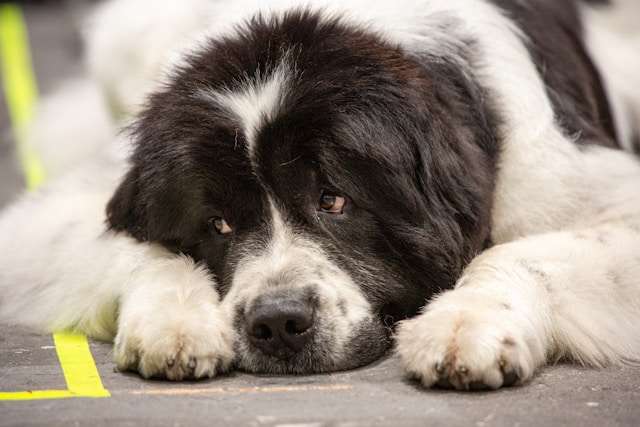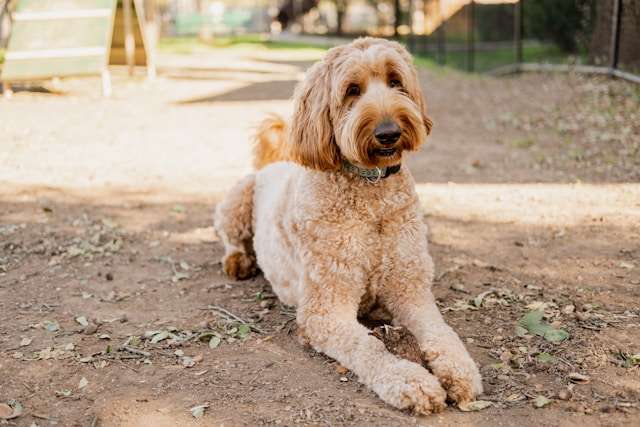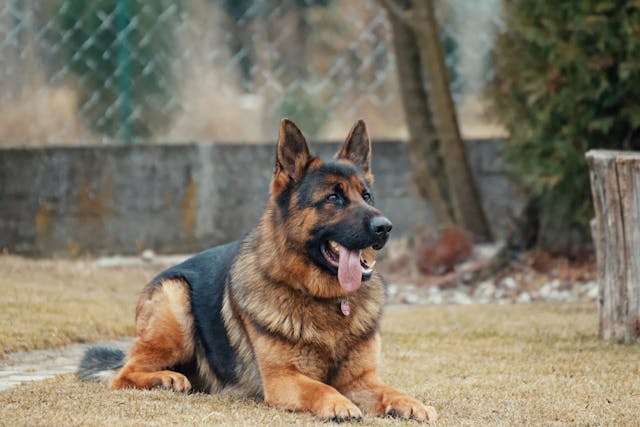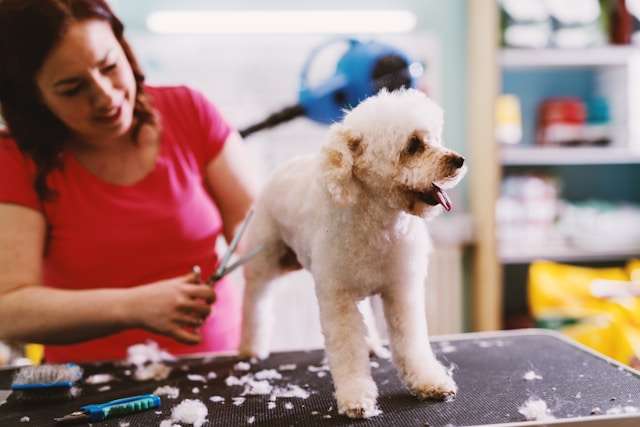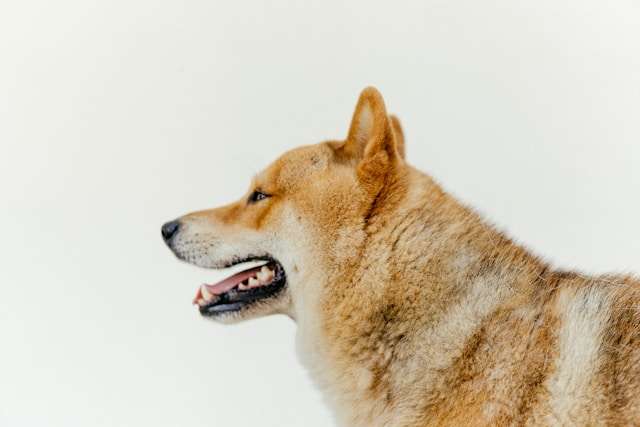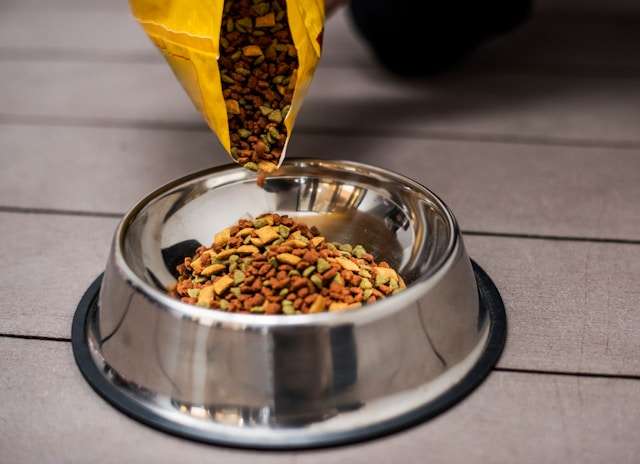The Ultimate Guide to Otterhounds: History, Care, and Personality
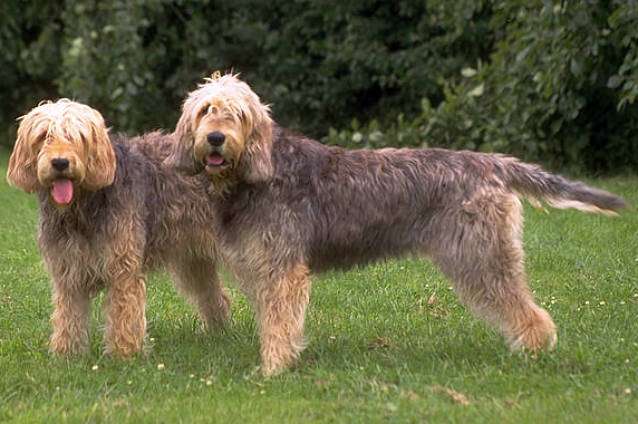
There are fewer than 1,000 Otterhounds left in the world today. These gentle giants rank among Earth’s rarest dog breeds. Their unique history, intertwined with English fox hunting and rural culture, has inspired me to share my knowledge with you.
British Otterhounds captivate attention with their rough, waterproof double coat and impressive size. Their unique blend of friendly temperament and independent nature makes them exceptional companions. These noble hunters display distinctive traits, from playful and social behaviors to occasional stubbornness, reminiscent of their foxhound cousins.
This detailed piece will explore the otterhound’s rich history and care needs while highlighting its remarkable qualities. You’ll find valuable information here, whether you’re considering adding an otterhound to your family or just curious about this rare breed and its connection to hunting history.
Table of Contents
The Ancient Legacy of Otterhounds
The Otterhound’s remarkable story starts in medieval England, intertwined with the history of fox hunting. These fantastic dogs first appeared in records from 1170, serving under King Henry II [1]. Their history shows how they shaped British hunting traditions through the centuries, alongside the development of fox hunting as a sport.
Origins in Medieval England
British monasteries needed to protect their fish stocks to survive. This need sparked the Otterhound’s creation [2]. Different hounds hunted otters at first, but the breed we know today emerged in the 1700s. The classic rough-coated form took shape by 1800 [2]. The sort of thing I love about these dogs is their unique mix of traits:
- A bulldog’s courage
- A Newfoundland’s water strength
- A pointer’s keen nose
- The foxhound’s stamina
- A beagle’s patience [3]
Royal connections and hunting heritage
British history reveals deep royal ties to Otterhounds and fox hunting. British monarchs kept these dogs for almost four centuries, from 1300 to 1685 [1]. Edward I chose John le Oterhunte as his royal pack’s Huntsman. Edward II owned “twelve otter dogs and a couple of greyhounds” [1]. Queen Elizabeth I was the first woman to lead a royal pack of otter hounds, setting a precedent in hunting history.
Development from terrier to modern hound
Careful breeding created today’s Otterhound, influenced by the evolution of fox-hunting dogs. French breeds like the griffon Nivernais and grand griffon Vendéen added to their bloodline [4]. The 1870s brought a key change when J.C. Carrick of Carlisle created the classic black and tan grizzle Otterhound. These dogs dominated show rings between 1867 and 1873 [2].
The breed changed direction unexpectedly in the 1970s. Hunters saw otter numbers dropping fast, leading them to stop hunting voluntarily in 1977 [3]. This shift coincided with growing debates about fox hunting and animal welfare. Now, these magnificent hounds are scarcer than giant pandas. Fewer than 800 remain worldwide [1], making them even rarer than some fox-hunting dog breeds.
Physical Characteristics and Breed Standards
An Otterhound’s majestic presence and unique features catch my eye whenever I see one. These dogs stand out from any breed I’ve encountered, including traditional foxhounds. Let me tell you about everything that makes them unique.
Distinctive features and appearance
The otterhound’s imposing head shows remarkable strength and dignity. What I love about them is their unique ears—long and pendulous, they fold in a way that creates an elegant draped look [3]. These ears serve a purpose beyond aesthetics. They sit low at eye level and can reach the nose’s tip when pulled forward [1].
These large, round, and webbed dogs have impressive feet, making them perfect swimmers throughout history. Their thick padding and strong knuckles make their feet unlike any other hound breed [1]. The webbed feet, a feature shared with other hunting dogs, are particularly well-suited for their original purpose of hunting in water.
Size and build specifications
These gentle giants have impressive dimensions:
| Measurement | Males | Females |
|---|---|---|
| Height | 27 inches | 24 inches |
| Weight | 115 pounds | 80 pounds |
The Otterhound’s body is slightly rectangular, with shoulder-to-buttock length exceeding height [5]. Its strong bone structure and broad muscles create a powerful yet refined appearance, reminiscent of its foxhound relatives but with distinct Otterhound characteristics.
Coat types and colors
The Otterhound’s coat stands out as one of its defining features. It amazes me with its two distinct layers:
- An outer coat that’s dense, rough, and coarse, measuring 4-8 cm in length [1]
- A water-resistant undercoat that’s shorter, wooly, and slightly oily [6]
These hounds come in beautiful color variations. Black and tan are the most common colors [7], but you’ll spot gorgeous wheaten, red grizzle, and blue and cream combinations [8]. Their colors change more than other breeds, which adds to their charm [7].
The breed standard welcomes any color or combination, though there’s an interesting catch – you won’t see liver and white or white bodies with clear black and tan patches in show rings [1].
Personality Traits and Temperament
My years of studying these remarkable dogs have amazed me by their unique personalities. I love how Otterhounds mix goofiness with dignity. They’re just big, friendly clowns in a noble dog’s body!
Social and friendly nature
Otterhounds are natural social butterflies with the friendliest personalities you’ll meet. These dogs treat strangers like friends they haven’t met yet [9]. They’ll make you laugh by trying to be lap dogs despite weighing over 100 pounds [9]! Their love for family shows in gentle nuzzles and eager companionship [10].
Here are some defining personality traits I’ve noticed:
- Boisterous and fun-loving
- Even-tempered and patient
- Affectionate and devoted
- Sensitive yet determined
Intelligence and independence
The sort of thing I love about Otterhounds is their unique mix of smarts and independence. Food motivates these clever problem-solvers [11]. I’ve heard funny stories about them opening refrigerators and working ice dispensers [11]! But their smarts come with stubbornness – they have “selective hearing” once an interesting scent catches their attention [10], a trait common among scent hounds and hunting dogs.
Compatibility with families and pets
Otterhounds make great family companions, but they need some careful planning. They fit best with:
| Household Type | Compatibility Rating |
|---|---|
| Active Families | Excellent |
| Homes with Older Children | Very Good |
| Multi-dog Households | Excellent |
| Homes with Small Pets | Moderate* |
*These dogs get along well with other canines [12], but keep an eye on them around smaller pets due to their hunting instincts. Early socialization helps them bond with children [9], but their size and energy make them better suited for older kids [12].
Note that these dogs struggle with being alone. Their pack animal nature [12] means they do best with human companionship or another dog friend around [2]. Leaving them alone for too long can trigger separation anxiety [2].
Essential Care Requirements
Otterhounds need your dedication and attention to detail. Let me share what I’ve learned about keeping these magnificent dogs healthy and happy.
Grooming and coat maintenance
These dogs have a distinctive double coat that needs regular care. My experience shows that brushing two to three times weekly keeps their coat healthy and prevents matting [13]. You’ll need some essential grooming tools. A quality slicker brush and medium comb work great for regular maintenance. Bath time requires mineral oil or eye ointment for protection. Don’t forget cotton balls to protect their ears and a rubber mat to prevent slipping in the tub.
The best part about otterhounds is that they don’t need professional grooming [2]. Their beards need extra attention because they quickly collect food and outdoor debris [14].
Exercise and activity needs
Otterhounds are energetic and need plenty of exercise, much like their hunting dog ancestors. They thrive with at least two hours of physical activity each day [2]. These versatile dogs love different activities. They excel at tracking and scent work, reminiscent of their fox-hunting heritage. Swimming comes naturally, thanks to their waterproof coat and webbed feet. They also enjoy agility training, obedience classes, and rally obedience [14].
Your yard needs secure fencing – these clever dogs can jump over 5-foot fences [15]! For those interested in maintaining the breed’s working abilities, activities like trail hunting or drag hunting can provide excellent mental and physical stimulation while respecting modern hunting legislation.
Nutrition and feeding guidelines
A well-planned feeding schedule works best for Otterhounds. Adult dogs do well with two meals daily [2]. Here’s what works for different age groups:
| Age Group | Feeding Requirements |
|---|---|
| Puppies | High-quality large breed puppy formula |
| Adults | Premium-quality kibble with balanced nutrients |
| Seniors | Age-appropriate formula with joint support |
These dogs thrive on proteins and vitamins [13]. Since they gain weight quickly, watch their calorie intake. A good rule is to limit treats to 10% of their daily diet [2].
Fresh water should always be available, and table scraps are off-limits [16]. Joint supplements might benefit your Otterhound early on because they tend toward hip problems [2].
Health Management and Longevity
My experience with these magnificent dogs taught me much about their health needs. Otterhounds are generally healthy for large breeds, but their well-being needs proactive care to reach their typical lifespan of 10 to 13 years [17].
Common health concerns
These dogs face several health challenges that need special attention. Glanzmann’s Thrombasthenia (GT), a rare inherited condition affecting blood clotting ability, is the most significant concern [18]. Here’s a complete overview of their primary health issues:
| Health Condition | Key Symptoms | Typical Onset |
|---|---|---|
| Hip Dysplasia | Lameness, decreased activity | Early to mid-life |
| Epilepsy | Seizures, unconsciousness | 1-4 years |
| Bloat (GDV) | Distended abdomen, restlessness | Any age |
| GT | Excessive bleeding, bruising | Before 1 year |
Preventive care measures
Keeping an Otterhound healthy needs a well-laid-out approach. My research and hands-on experience suggest these vital preventive steps:
- Regular veterinary check-ups with specific attention to:
Building a relationship with a vet who knows the breed’s needs makes a huge difference. Owners should have an emergency care plan ready since these dogs can develop bloat [19].
Genetic testing recommendations
Genetic testing forms the foundations of breed health maintenance. The Kennel Club has approved specific DNA testing schemes, especially for Glanzmann’s Thrombasthenia [18]. My recommendations include:
Progressive Rod-Cone Degeneration (PRCD) testing [20] Hip and elbow evaluations before breeding [8] GT DNA testing for all breeding stock [18]
I love modern genetic testing because it changes breed health management. Dogs can now be classified as Clear, Carrier, or Affected [18], which helps breeders make more intelligent choices about breeding pairs.
Early detection helps manage many health issues effectively. For example, see how many Otterhounds with moderate hip scores lead active, comfortable lives [8]. Regular monitoring and proactive care make the difference.
Pet insurance deserves special mention. The breed’s specific health needs and potential emergencies mean good coverage helps ensure your Otterhound gets the best possible care [19].
Conclusion
Otterhounds represent living pieces of history that combine their noble hunting heritage with an endearing personality. My time tucking into these remarkable dogs has revealed why they deserve more recognition despite their rarity.
Patient and understanding owners must meet these gentle giants’ specific needs. Their care demands regular exercise, thorough grooming, proper health monitoring, and genetic testing. The Otterhound’s friendly nature and independent streak create the sort of thing I love – a unique balance that rewards active families.
My experience with Otterhounds proves their worth as extraordinary pets. They need dedication, but their household’s joy makes every effort count. These dogs’ loyalty and playful spirit shine through their distinctive traits.
Otterhound owners join an exclusive group preserving this ancient breed. Each caretaker is vital in helping these magnificent dogs thrive for future generations. While their original purpose in otter and fox hunting has evolved, their place in rural culture and as beloved companions remains strong.
FAQs
Q1. How rare are Otterhounds, and why are they considered endangered? Otterhounds are among the rarest dog breeds globally, with fewer than 1,000 remaining. Their endangered status is primarily due to the cessation of otter hunting in the 1970s, which was their original purpose. Today, they are rarer than giant pandas, making them a unique and precious breed.
Q2. What are the distinctive physical features of an Otterhound? Otterhounds are known for their large, rough double coat and impressive size. They have a distinctive head with long, drooping ears that can reach the tip of their nose when pulled forward. Their feet are large, round, and webbed, perfect for swimming. They typically weigh between 80-115 pounds and stand 24-27 inches tall at the shoulder.
Q3. How much exercise does an Otterhound need? Otterhounds are energetic dogs that require substantial daily exercise. They need at least two hours of physical activity each day, including tracking, swimming, agility training, and obedience classes. A securely fenced yard is crucial as they can jump fences as high as 5 feet. Some owners engage in trail or drag hunting to provide mental and physical stimulation.
Q4. What are the common health concerns for Otterhounds? While generally healthy, Otterhounds can be prone to certain conditions. These include hip dysplasia, epilepsy, bloat (GDV), and a rare inherited condition called Glanzmann’s Thrombasthenia (GT), which affects blood clotting. Regular veterinary check-ups, genetic testing, and preventive care are essential for maintaining their health.
Q5. Are Otterhounds good family pets? Otterhounds can make excellent family companions for the right household. They are naturally friendly, affectionate, and good with children if socialized early. However, their large size and boisterous nature make them better suited for homes with older children. They generally get along with other dogs but may need supervision around smaller pets due to their hunting instincts.
References
[1] – https://www.thekennelclub.org.uk/breed-standards/hound/otterhound/ [2] – https://www.petmd.com/dog/breeds/otterhound [3] – https://en.wikipedia.org/wiki/Otterhound [4] – https://www.countryfile.com/animals/pets/otterhound-dog-breed-facts [5] – https://www.otterhounduniversity.com/breed-standards.html [6] – https://images.akc.org/pdf/breeds/standards/Otterhound.pdf [7] – https://www.otterhounduniversity.com/otterhound-colors.html [8] – https://www.akc.org/dog-breeds/otterhound/ [9] – https://www.webmd.com/pets/dogs/what-to-know-otterhounds [10] – https://www.weenect.com/us/en/guide/dog-breeds/otterhound/?srsltid=AfmBOopsMfyGzB2fO9LlDihXuGSxLzeLqFVv_ZsvTd-Hl1PyYPzH08T0 [11] – https://www.otterhounduniversity.com/personality.html [12] – https://www.dogster.com/dog-breeds/otterhound [13] – https://www.weenect.com/us/en/guide/dog-breeds/otterhound/?srsltid=AfmBOoqbc8LatN7Pz96i37ImaC6eMcopnXLxyOuGu_ooZYmYGpdTXtMp [14] – https://otterhound.org/life-with-an-otterhound [15] – https://www.bil-jac.com/breed-library/otterhound/ [16] – https://www.otterhounduniversity.com/nutrition.html [17] – https://www.worldlifeexpectancy.com/dog-life-expectancy-otterhound [18] – https://www.thekennelclub.org.uk/media-center/2020/april/new-dna-testing-scheme-to-combat-inherited-disease-in-the-vulnerable-otterhound/ [19] – https://www.otterhounduniversity.com/healthcare.html [20] – https://vgl.ucdavis.edu/breed/otterhound

